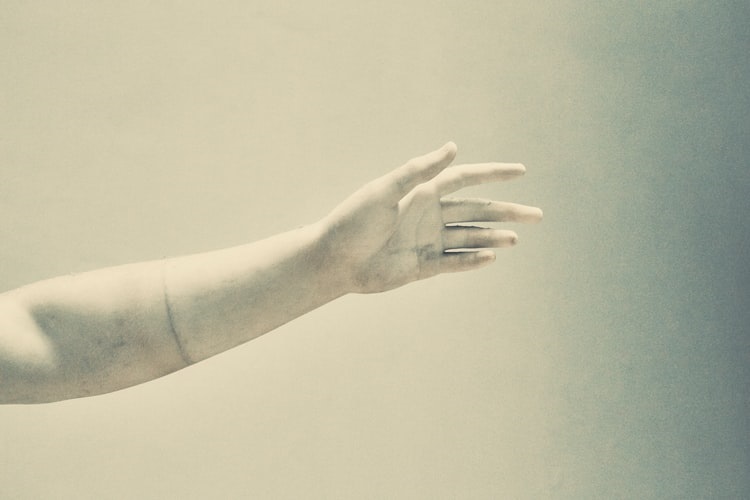Medical Artificing
This article is by no means complete. Please come back once the update has been sent to Followers. You'll know that's happened when it has a cover image. Thanks!
Uncle Madrimlian smiled at them. “Elani, I may have something that will cheer you up.” He brought out a long wooden box. When he opened it, they saw a gleaming silver hand on the end of a silver forearm resting inside on sheepskin. Yathar studied it with wide, curious eyes. “That’s really neat,” he said after a few moments. “How does it work?” “The artificer tells me that you just attach it to your arm and speak the incantation encoded in the bindrune, and it fastens on until you say it again, unless someone dispels it,” Madrimlian explained. “He wanted me to extend his apologies that it took so long. He tells me that fingers can be difficult, and then you gained so much weight in that short time that he had to make some adjustments.” Yathar lifted it out of the box it was nestled in. It looked like some kind of weird metal spider from this angle, its fingers curling like legs. “Where do I find the bindrune?” “It’s on the inside where it attaches,” said Madrimlian. Yathar turned it around to look, then spoke the incantation and pressed it to the stump of his arm. It shifted to connect itself with a sucking noise, and the fingers came to life like a bizarre wind-up toy. Yathar smiled and flexed his new hand. He hooked the first and second digits and fished the cigar out of his mouth. This seemed to amuse him and he laughed out loud. “How dexterous is this?” “I’m given to understand,” said Madrimlian with a smile, “that it should work almost exactly like your natural hand. It’s even warm to the touch.” He put the palm against his cheek, the cigar burning away between the fingers. “So it is,” he agreed. “Warm metal. Weird.” He chuckled happily. “Thanks for bringing it, Uncle Madrimlian! Let’s get this boat unloaded!”Medical Artificing is the art and science of creating devices for medical purposes. In practice, this generally means building prosthetics. This important technology has significantly improved life expectancy, and quality of life, for thousands, especially Avalonian Imperial Navy war veterans. A mithril prosthetic is shaped to replace the missing body part and bound to the patient's spirit. It weighs just slightly more than the part that was lost, since Mithril is so lightweight. It remains flexible where necessary, so that it operates much the same as the part that was lost. Patients even report nerve sensation from their prosthetics, although by all reports, all sensation is somewhat dulled. However, mithril prosthetics do nothing to combat phantom pain and the other accompanying effects of amputation. There are limitations to the arcanology. For instance, it is not possible to replace a lost eye by means of mithril prosthetics, largely because mithril is an opaque substance, and therefore, it is not possible for mithril to register light. However, mithril could be used to replace the occipital bone or the orbit surrounding the eye, or to replace lost muscle and tendon to operate the eye muscles. Rarely, eye replacements have been successful when the optical nerve remains intact, by attaching a clear gemstone to a carefully-crafted mithril muscle and tendon structure, with a thin layer of mithril and silicone on the back of the gem connecting to the optic nerve. However, the anatomical knowledge, and crafting and magical skill, required to do this is so advanced and so rare, that perhaps half a dozen such attempts have ever succeeded.
Utility
Medical artificing is a life-saving technology that helps hundred, if not thousands, of injured people every year. There are rumours of unscrupulous sorcerers who force prosthetic parts on unwilling subjects and use them to control their victims, or who create prosthetics that require blood sacrifices or life energy to operate, but there is no evidence that these are more than superstitious rumours.
Manufacturing
A Medical Artificer measures, and possibly takes a cast of, the damaged or missing body part. An equivalent weight of mithril is then sung into shape by weaving the Airts to reshape the mithril. Part of this process involves attuning the prosthetic to the patient by the use of their blood, hair, fingernail clippings, or something else with a direct physical connection to the patient. The replacement part is either permanently attached by bolting and grafting it on to bone, using metal plates and screws, or it is shaped to fit the residual limb so that it can be removed and reattached as necessary, such as in the case of a missing arm or leg.
Don't forget that you can click on the blue compass on the left to access the Table of Contents at any time!

Want to read all of the Toy Soldier Saga fiction, even before the rest of the world does?Subscribe now!
Access & Availability
As of the beginning of the First Interstellar War (IW1), mithril prosthetics were almost unheard of. However, by the beginning of the Second Interstellar War (IW2), most wounded star-sailors who lost limbs can reasonably expect to receive a mithril prosthetic at some point. However, the waiting list is notoriously long, and nobles typically end up jumping the queue.
Complexity
The technology of Mithril-Singing is essential to the construction of working artificial limbs, as is a working knowledge of necromancy. Each prosthetic is bound to the person it is created for, and cannot be used by anyone else. In part, this is because each prosthetic is individually designed to bind with the unique body and injury it is created for, but it is also bound to the patient's spirit, and will simply not operate otherwise.
Discovery
Elven crafters have long been aware that Mithril is a malleable substance. When sung with the appropriate enchantments, and infused with the energy of the Airts, mithril behaves more like clay than metal. However, the technology of Mithril-Singing is known to only a rare few, as the knowledge was nearly lost.
An artificer named Balryn Crystalleaf pioneered the process while trying to save the life of an unfortunate gnome named Luwraek . He had received instruction in mithril-singing from his great-grandfather as a young elf, and this set him on the Crafter's path. He had previously experimented with creating automatons from sculpted mithril, and while binding the substance to living tissue was experimental, it was not outside of the realm of possibility. Rumour has it that some necromancy was involved, but this has not been confirmed.
Related Materials






Comments